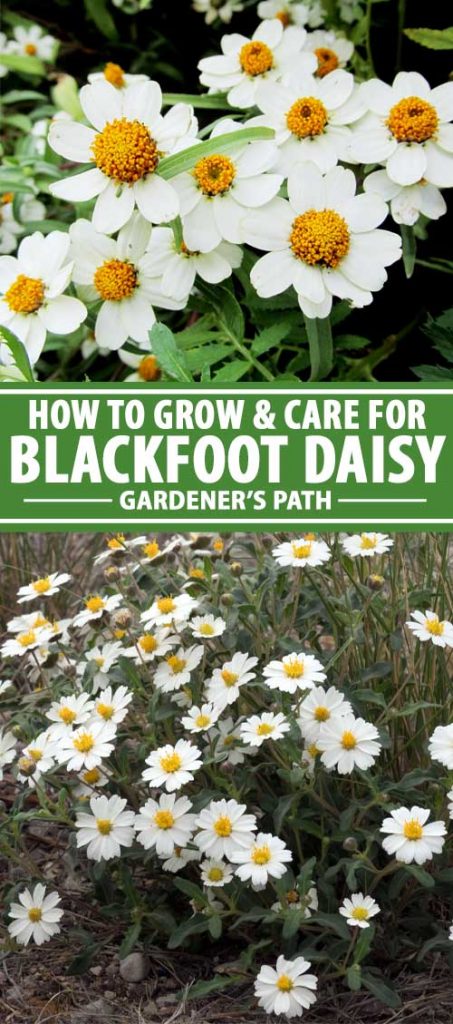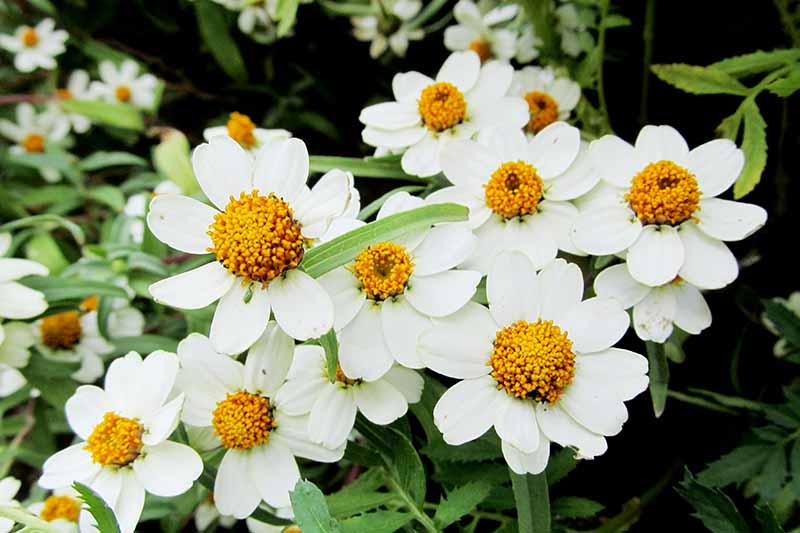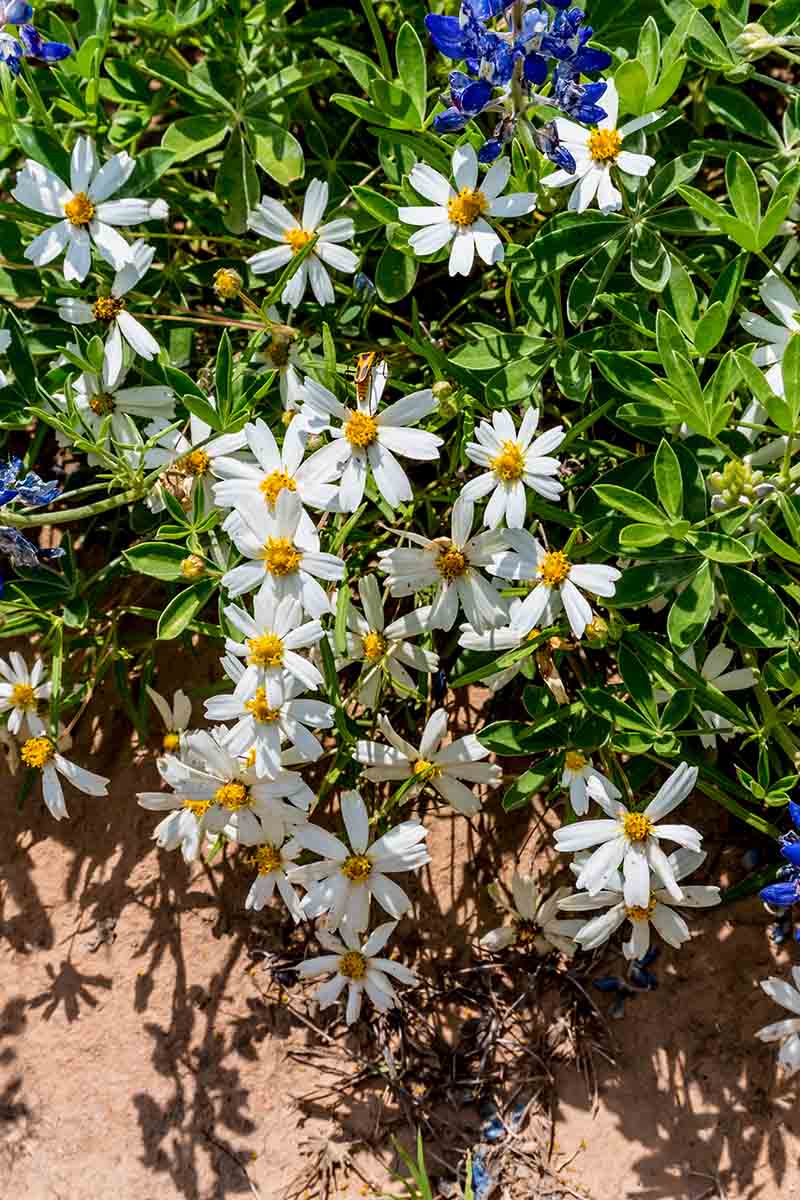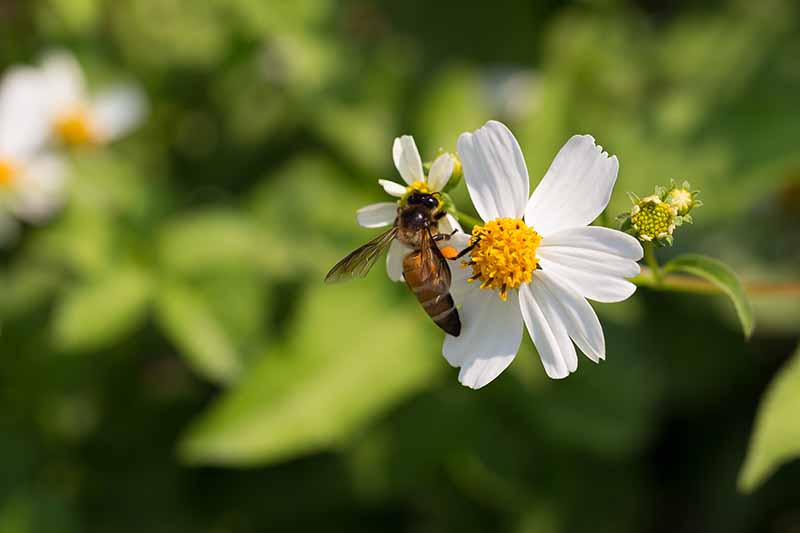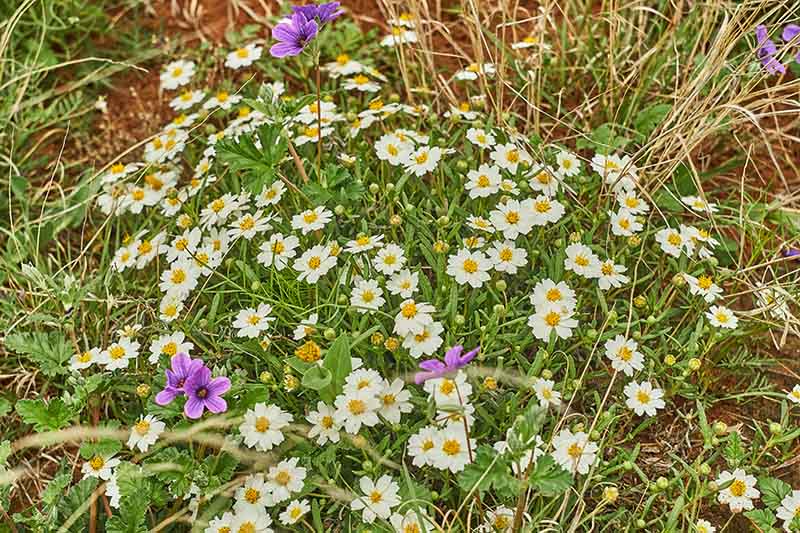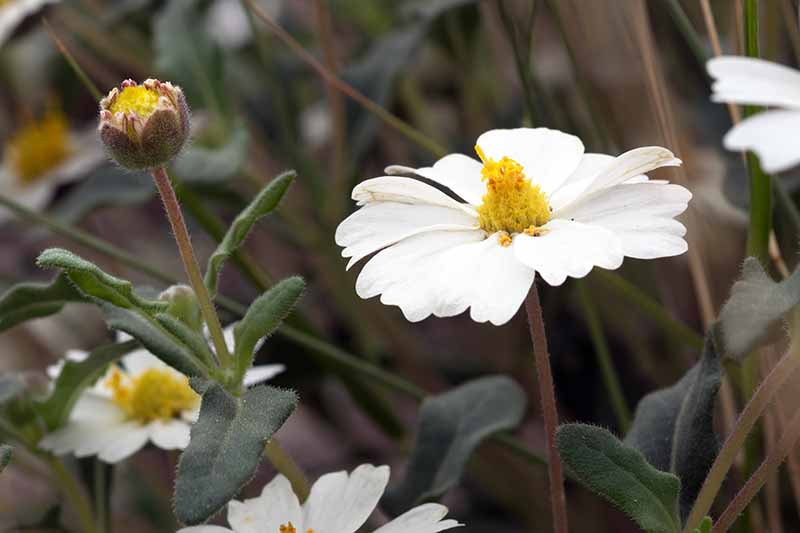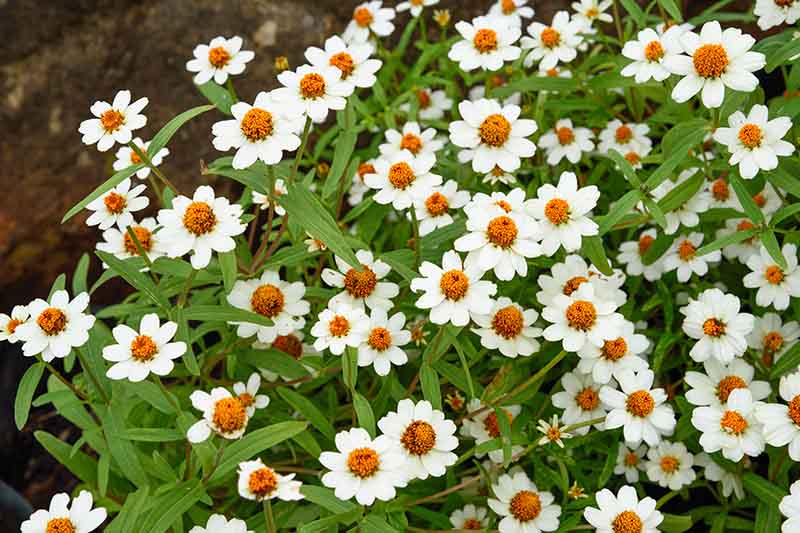This evergreen perennial member of the Asteraceae family has a low, round, bushy form and produces an abundance of one-inch, white, daisy-like flowers from early spring through late fall. The dark green foliage consists of 2-inch-long, narrow, oblong leaves. We link to vendors to help you find relevant products. If you buy from one of our links, we may earn a commission. “Blackfoot” refers to the bract that surrounds each seed that is shaped like a foot, and turns black as it matures. Hardy in USDA Hardiness Zones 5-11, blackfoot daisy grows six to 12 inches tall, with a spread of 12 to 24 inches. Its numerous aliases include rock daisy, desert daisy, ash gray blackfoot, plains blackfoot, and arnica. Let’s learn more! This low-maintenance wildflower is ideal for growing in gardens with dry, rocky soil or xeriscapes. It grows prolifically in open grassland and desert scrublands. Sometimes confused with the native desert zinnia, Zinnia acerosa, the flowers of the blackfoot daisy have 8-10 white petals, while desert zinnias have 4-6, and they are broader.
Propagation
Blackfoot daisy propagates easily from seed – either planted or scattered by the wind. Or you can take cuttings from an existing plant, or buy transplants from a local garden center or nursery.
It is not suitable for propagation by division as it has a deep taproot, and is difficult to transplant once it has become established.
From Seed
Direct sow seeds outdoors in the fall. Plant seeds 1/8 inch deep, space 12 inches apart, and water in well. Alternatively, you can start seeds indoors six weeks before winter’s last frost. If sowing indoors, cold stratify the seeds before planting them. To do this, place them in a sealed container in the refrigerator for about four weeks prior to sowing. Blackfoot daisy will liberally reseed itself and become naturalized in the landscape, though not to the point of becoming invasive.
From Cuttings
From an existing plant, take a 4 to 6-inch cutting. Remove any buds or flowers, and the lower leaves. Dip the cut end into a powdered rooting hormone and place in well-draining soil, or a soilless growing medium. Maintain even moisture, but do not allow the planting medium to become waterlogged.
From Seedlings or Transplanting
Transplant seedlings – those you’ve grown or purchased from a garden center – after all danger of frost has passed. Wait to transplant until they are about six inches tall but before they have started budding, to minimize transplant shock. Plant at the same depth as the container from which you are transplanting in well-draining soil, and leave 12 inches of spaace between plants. Water in well, and keep the transplants moist but not waterlogged until they become established.
How to Grow
Blackfoot daisy prefers full sun, but it will tolerate a bit of shade. And if you live in an area where the sun blazes for 14 hours a day, you most definitely want to provide some afternoon shade.
This plant requires well-drained soil, and its roots will rot if they’re wet for too long. It prefers dry, rocky, gravelly, sandy soils and will tolerate calcareous, limestone, and caliche soils. Once established, M. leucanthum is extremely drought tolerant. It will thrive when watered deeply only two or three times during the summer months, and once a month in winter. You don’t have to fertilize blackfoot daisy, as it prefers poor soil conditions. To grow it in containers, add some sand or perlite to your potting mix to ensure it drains well. You may need to provide additional irrigation as the soil in containers tends to dry out more quickly than in the garden.
Growing tips
Plant in a full to part sun location in well-draining soil Be careful not to overwater, or this may cause root rot Prune in late winter to promote a more compact form
Pruning and Maintenance
As plants mature, they may become leggy. You can cut them back in late winter to encourage a more compact and bushy form.
You can deadhead you like, but it’s not necessary – the flowers will bloom regardless. If you wish to harvest the seeds, allow the seed heads to dry on the plants, then remove them. Shake the seed heads into a paper bag and store in a cool, dry place, or sow immediately in another area of the garden.
Where to Buy
Your best bet for sourcing this plant is to check with your local garden center, or see if friends and neighbors are growing it, and take cuttings or collect seeds.
Managing Pests and Disease
This tough plant is deer-resistant, and is generally not plagued by insect pests. The only issue to watch out for is root rot caused by fungi, if the plant is growing in soil that does not drain well. If M. leucanthum is allowed to stand in waterlogged soil, it will fail to thrive, and drop its leaves and blooms.
If you pull up your plant and see mushy roots, root rot is likely the culprit. If the whole root system is affected, you’ll have to discard the plant. If some healthy roots remain, clip away the mushy roots, and either fix the drainage problem or relocate the plant to a more suitable location, with soil that does not become waterlogged.
Best Uses
Blackfoot daisy looks lovely and performs very well in rock gardens or wildflower meadows.
It can also be grown in containers or in mass plantings as a ground cover – just be aware that the stems are quite brittle, so it is not suitable for growing in high-traffic areas.
Quick Reference Growing Guide
A Whole List of Awesomeness
Drought-tolerant? Check. Heat- and sun-tolerant? Check. Low maintenance? Check. Long blooming season? Check! What are you waiting for? If you’re looking for a durable, pretty plant that’s happy to hang out in your less-than-organically-rich soil, blackfoot daisy is calling your name.
Already have this beauty in your landscape and have tips to share? Spill your secrets in the comments section below! If you are looking for more information about growing drought tolerant plants, you’ll need these guides next:
How to Grow Asiatic Jasmine How to Grow Texas Mountain Laurel How to Grow Turpentine Bush: the Desert Dazzler

